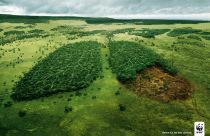
© WWF
As I retweeted ABC Environment‘s sentiment for a Happy Environment Day, I added that we have little to be happy about.
However, I am happy about one thing – we’ve recently received a large ARC Linkage Grant to look at best-practice forest regeneration techniques. The Environment Institute just put out a post on it, so I’ll let Adriana’s words do the talking.
–
Sunday, 5 June is World Environment Day, this year’s theme is ‘Forests: Nature At Your Service’. Read on to find out how researchers at The Environment Institute are looking at ways of restoring our forests.
World Environment Day (WED) is an annual event that is aimed at being the biggest and most widely celebrated global day for positive environmental action. World Environment Day celebrations began in 1972 and has grown to become the one of the main vehicles through which the UN stimulates worldwide awareness of the environment and encourages political attention and action.
The host city for World Environment Day 2011, for the first time ever, is India.
This year’s theme ‘Forests: Nature at Your Service’ emphasises the essential link between quality of life and the health of forests and forest ecosystems. The theme also supports this year’s UN International Year of Forests.
A Linkage grant has just been awarded to Environment Institute Researchers, Professor Andrew Lowe, Professor Barry Brook and Professor Corey Bradshaw to develop best-practice restoration guidelines for forest ecosystems to enable them to become resilient to climate change and maximise biodiversity and carbon-capture outcomes. The grant titled ‘Developing best-practice approaches for restoring forest ecosystems that are resilient to climate change’ is for $405,222.00 over four years.
Habitat restoration is critical for ameliorating the ecological impacts of environmental change. However, existing restoration practices tend to rely on ad hoc rules of thumb (e.g. ‘local is best’) that lack a firm scientific basis, fail to account for future climates, risk wasting resources and will likely produce sub-optimal, long-term outcomes. The project proposes to improve current restoration practices by combining genetic diversity, fitness assessment and simulation modeling with large-scale planting experiments to develop best-practice approaches for species and provenance choice, and landscape designs that are resilient to climate futures. It will also assess planting outcomes in terms of market-based instruments for biodiversity and carbon.
Find out what people are doing all over the World to celebrate World Environment Day, here.

